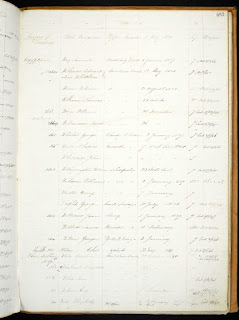"The hardest day we have had The wind blew a perfect gale all day & the dust flew in clouds & no water to cook with or for the Horses"...
so wrote Fleury Fayette Keith in longhand as he began his trek to cross the Plains in May of 1850... and yes it is a strange name--and that is another story!
It was a journey we readers can only imagine. After walking about 20 miles a day every day, he arrived in Weaverville, California on August 31st.
If you fly across the country you may well take the route that covers the Oregon Trail, and if you look closely, you can see the landmarks encountered by the travelers, including the important and long Platte River. The best and most interesting sources of information on the routes and the hardships and rewards can be found in original diaries.
Look to the following resources for the stories in the original, and sometimes in the original manuscript...these are really stories of the individual in the context of history in the happening...poignant and fascinating.
Recommended websites are:
American Memory Library of Congress: Trails to Utah and the
Pacific: Diaries and Letters 1846-1869.
Trails of Hope,
a digital collection of diaries of gold rush adventurers, is an
excellent resource for understanding the physical and mental experiences
of the Argonauts as they trekked westward. The digitized collection has
the images of the original diaries scanned and also has transcriptions.
The collection is held in the Harold B. Lee Library of Brigham Young
University. There are also interactive maps and illustrations, so you
can follow the diarists along their journey, and see just where they
encountered buffalo, salt ponds, graves of fallen travelers, and all
manner of difficulties. All of this can be found at http://overlandtrails.lib.byu.edu/about.html. It is inspiring and fascinating, even if you have no connection to anyone on the trails.
There you will find the story of F.F. Keith who traveled from Jefferson County, New York to California in 1850, documenting the howling of the wolves, the treacherous crossings of rivers, the amazing geographical landmarks, crossing the Sierras having abandoned the wagons and seeing big trees for the first time.
http://cdm15999.contentdm.oclc.org/cdm/ref/collection/Diaries/id/1179
There you will find the story of F.F. Keith who traveled from Jefferson County, New York to California in 1850, documenting the howling of the wolves, the treacherous crossings of rivers, the amazing geographical landmarks, crossing the Sierras having abandoned the wagons and seeing big trees for the first time.
http://cdm15999.contentdm.oclc.org/cdm/ref/collection/Diaries/id/1179
Other good websites for Oregon Trail diaries:
Paper Trail (The Oregon-California Trails Association)
The Overland Trail http://www.over-land.com/)



